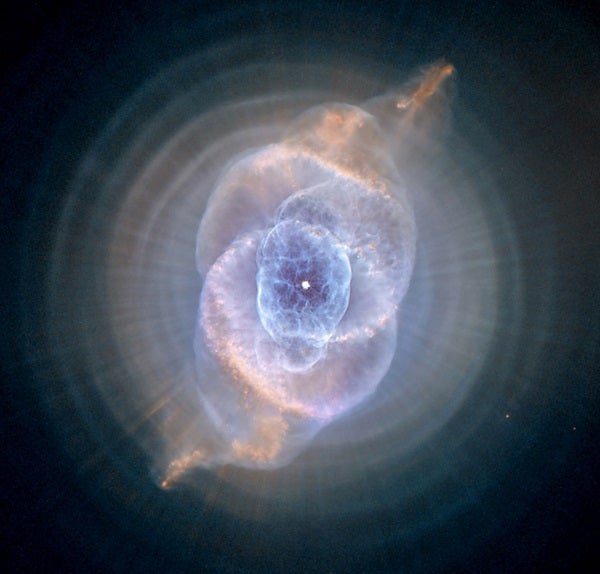
A Sun-like star ends up as a carbon-oxygen white dwarf (center), the leftover core of its former self. In the late stages, the star pulsates and loses its atmosphere, usually in brilliant fashion, forming a planetary nebula. The Cat’s Eye Nebula, shown here, is one of the most complex planetary nebula structures.
NASA/ESA/HEIC/and The Hubble Heritage Team (STScI/AURA)
When all that is left is the carbon-oxygen core — which is extremely small and dense (a teaspoonful would weigh a ton) — we would call the Sun, ultimately, a white dwarf. I wouldn’t recommend trying to walk on one of these objects, however.









